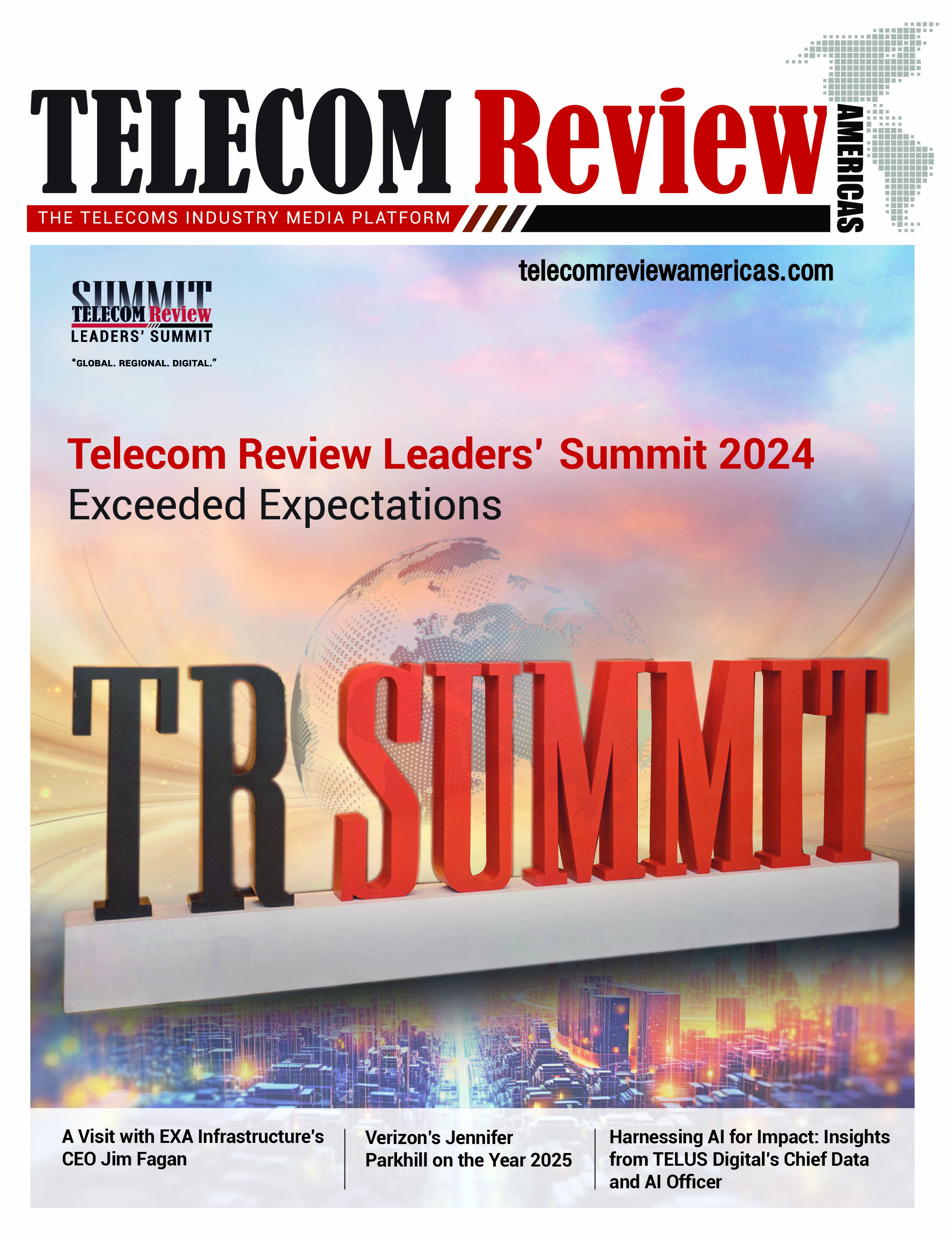Service Management & Orchestration evolves the service layer of traditional OSS using intent-based orchestration, standard models (e.g., YANG) and closed-loop control to fully automate services across hybrid domains. With a real-time, end-to-end view of the entire service and a single interface into the BSS layer, service providers can achieve a zero-touch operational model that is essential for new multivendor digital services, including highly dynamic 5G and IoT offerings.
Telecom Review recently worked with Netcracker to get their ideas on Service Orchestration. Susan White, Head of Strategy and Portfolio Marketing at Netcracker gave us a good overview of how they are approaching the market
- With the exponential growth of communications service provider (CSP) networks in both size and diversity, why is E2E service orchestration becoming a necessity?
CSP networks are undergoing considerable changes to accommodate the agility and automation needed to meet the new digital demands of their customers. E2E service orchestration is a key enabler for these important evolutions for the following reasons:
- Services need to become more dynamic - requiring the ability to rapidly deploy new features, upgrades, and services and be able to scale on demand. This will increase further with 5G.
- Network functions are evolving to be cloud-native - resulting in a complex network of cloud-native network functions (CNFs), virtual network functions (VNFs), and physical network functions (PNFs), supplied by an increasingly wide range of vendors.
- IT systems are being transformed and modernized – requiring a mediation layer to bridge between legacy and modern BSS/OSS environments and core, edge and transport network domains.
- Networks and IT systems are moving to the cloud - through a combination of the CSPs’ own cloud platforms, as well as those from hyperscalers. Cloud is also moving to the edge to accommodate the disaggregated RAN and the emergence of high-performance multi-access edge computing (MEC) applications.
- The desire for 5G network slicing – based on the emergence of the new 5G core, distributed across the core and edge. This forms the basis for new low latency services with network slicing adhering to strict service level agreements (SLAs).
Without E2E service orchestration across multiple domains and cloud platforms, these important evolutions will be too complex, costly, and time consuming to execute, making on-demand services and 5G network slices impossible.
- For CSPs to harness the full power of 5G networks and multi-cloud platforms, what does E2E service orchestration need to provide to ensure full collaboration between and among multi-vendor systems?
The full potential of 5G requires networks, services, and slices to be dynamic with the ability to rapidly deploy, scale on-demand, continuously optimize for SLAs, and resolve issues without impacting services. To realize this goal, service orchestration must provide an end-to-end view in real time across all technology and cloud domains, with a single pane of glass management. All aspects of cross-domain services (including new MEC services) and network slice operations need to be automated from design to deployment, lifecycle management, optimization, and assurance.
With this level of automation, CSPs have the foundation to build a successful 5G and digital services business. However, a number of key design principles are essential to ensure multi-vendor collaboration, including:
Intent and model-driven orchestration: Intent is a powerful approach, whereby service or business requests are automatically accomplished without implementation experts. The workflows are dynamically composed based on a catalog of service models, policy and context, with closed-loop control to automate the entire service and network slice lifecycle across hybrid networks.
Cloud-native architecture: Container-based microservices are essential to maximize the benefits of cloud, including on-demand scaling, rapid DevOps-based deployments and upgrades, and overall operational efficiency. They need to run on any Kubernetes-based platform (CSP or hyperscaler).
Artificial intelligence (AI)-driven closed control loop automation: Service orchestration must work with AI and advanced analytics to automate all aspects of the operations environment in closed loop. This includes the ability to continuously detect and predict potential issues, resolve problems, optimize networks, and implement changes with no human intervention.
Vendor agnostic and open standards: It’s essential for CSPs to build an ecosystem of best-of-breed partners and adhere to open industry standards to avoid the traditional pitfalls of vendor lock-in. Which means service orchestration must accommodate any vendor solution and support open application programming interfaces (APIs) and standard service models. This is essential to simplify the integration and automation of multi-vendor services and expose relevant information to business and network domains.
- We understand that E2E service orchestration is an important driver for the deployment, management and monetization of 5G and edge services, and that 5G and edge applications are the driving forces in Industry 4.0 development. What are the potential use cases waiting to be realized?
The opportunities presented by 5G networks and slicing are almost endless. 5G, cloud, and edge technologies have the potential to transform industrial and service sectors across the globe, including manufacturing, smart cities, transportation, and healthcare. This will provide CSPs with the ability to diversify into these vertical markets by offering private or shared 5G networks with differentiated network slicing and specialized partner services.
At this point in time, new use cases are typically focused on private 4G/5G networks for enterprise verticals. The outcomes of these early use cases have revealed three key requirements:
- Fast set up of private 5G networks to connect high volumes of devices (sensors, cameras, drones, machines etc.) with high capacity and ultra-low latency.
- Open MEC platforms located on-premise or at the network edge, to host a variety of MEC applications, as well as the 5G UPF core, security and connectivity functions.
- The flexibility to use hyperscaler edge cloud stacks to speed up deployments.
These new use cases will need an E2E service orchestration approach across edge, transport, and core domains – even for edge services and slices. For example, some MEC applications will require intelligent placement in an edge host, however, others with less stringent requirements can be hosted regionally. E2E service orchestration will take care of the full MEC service and automate the service lifecycle, including assurance and continuous optimization, to prepare the entire network.
- Netcracker in conjunction with its partners recently conducted a proof of concept (PoC) with MEF to explore the challenges of orchestrating across multiple edge cloud platforms in the manufacturing industry. Can you provide details on the PoC and their outcomes?
Deploying and running edge cloud services requires significant effort, as well as the ability to work with numerous partners and technologies. These include MEC platforms, MEC applications, connectivity from the LAN and between all cloud sites, on-premise / edge platforms, and the public cloud. In fact, edge services require an E2E approach, which is why E2E service orchestration, in addition to edge orchestration, is critical to their success.
While large enterprises in vertical industries can build and manage these services on-premise, for the majority of enterprises with smaller IT teams, this is not a feasible option due to significant cost and complexity.
CSPs have an opportunity to take a leading role in this complex environment and offer it as a service to their enterprise customers. This was the motivation for Netcracker to team up with NTT Communications, Microsoft, Juniper and ADVA to create ‘Orchestrated Multi-Edge Cloud,’ a MEF PoC to validate the feasibility of such service offerings.
The PoC goal was to show how manufacturing verticals would be able to improve time to market and production performance/efficiency by purchasing managed cloud services, including applications bundled with connectivity from a CSP using a combination of hyperscaler and CSP cloud platforms.
Using MEF’s Lifecycle Service Orchestration (LSO) framework to facilitate API integration, we showed how CSP edge services, including SD-WAN and a 5G UPF core, could be hosted on public cloud edge platforms (Azure Edge stack), and third-party MEC applications (e.g. Microsoft’s IoT Edge) could be hosted on a CSP edge platform. We used a combination of our Edge Orchestration and E2E Service Orchestration solutions, to dynamically place resources at the optimal edge/regional location with automated deployment, SLA assurance, and full lifecycle management.
The first PoC scenario focused on an enterprise that wanted to open a new warehouse with Industry 4.0 technology, including AI-driven smart sensors and facial recognition technology. With pre-integrated managed services provided by a CSP, including an Internet of Things (IoT) MEC service with Wi-Fi/LAN/WAN connectivity, the enterprise was able to deploy and activate the warehouse 60 percent faster than they would have been able to with an internally built solution.
The second PoC use case focused on the needs of an automated factory that wanted to upgrade its 4G network infrastructure to 5G to achieve higher capacity and lower latency for its production line. Using an IoT MEC service, managed by a CSP that provided end-to-end connectivity and 5G network slicing, network performance improved by 10 percent.
-
What will it take for CSPs to develop an end-to-end view of their operations environment to enable service automation? What are some of the challenges they can expect, as well as potential solutions and benefits?
An E2E operations view of a network starts by knowing what is in each network domain – the core, transport, and edge domains. And not just what is in each domain – in real time – but how to make each network domain fully autonomous and expose the relevant data to the service layer.
Domain automation is a new operational approach that CSPs are adopting. It combines the cloud-native orchestration, inventory, configuration management, assurance, and AI/analytics to make the domain fully autonomous and self-sufficient. This avoids the need for a heavy monolithic architecture and central processing. Service orchestration plays a key role in each domain that focuses on automating service and slice provisioning, lifecycle management and assurance, within the domain itself.
For example, in the transport network CSPs will typically have several vendors for IP/MPLS and optical networks – each with multiple layers and transport domains. Domain service orchestration will have a complete E2E view of the domain, enabling it to automate service and slice provisioning across this complex mixed technology and vendor landscape. However, domain service orchestration has no visibility or knowledge of services in other domains, or services that cross domains. Real-time information is shared between domains using open APIs.
CSPs are making good progress with domain automation, although there is still much work to do. However, given most services cross multiple domains, the current approach of manually stitching and provisioning services prohibits their ability to deliver services on demand. This is why CSPs are now turning their attention to an E2E, cross-domain service orchestration approach. And not just for services – network slices and MEC services require a complete E2E approach.
The starting point is with service design and CSPs need to build up their expertise here to build dynamic service and slice models – initially focusing on pre-defined models for the most popular cross-domain services and slices. The models will be stored in the service catalog and executed by the orchestration engine using service intent.
Real-time inventory is a new essential OSS function that provides an E2E view of the service state and works in conjunction with the assurance and AI/analytics components to ensure SLAs are being met.
All these functions are cloud-native components of E2E service orchestration, which becomes the essential glue between networks and IT. Its visibility across the entire network and business ecosystem, and ability to automate services makes it critical to the success of 5G and on-demand services.


































